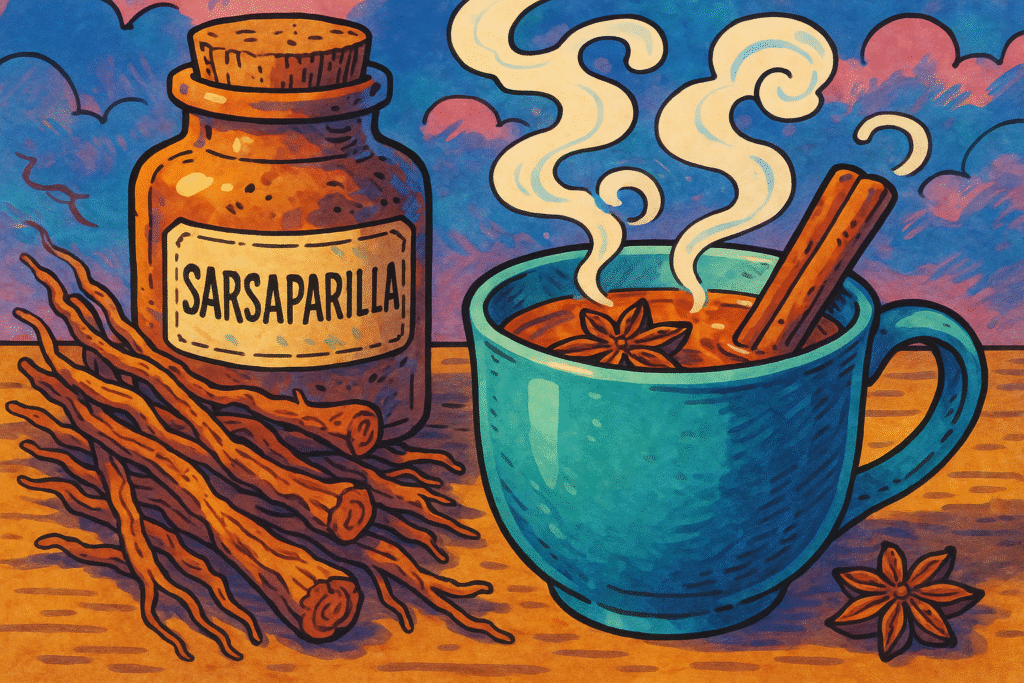Sarsaparilla (Smilax ornata / regelii )

About Sarsaparilla
Sarsaparilla is a climbing vine whose roots are used for their earthy, subtly sweet flavor — reminiscent of vanilla, licorice, and cinnamon. It’s best known for flavoring traditional root beer, herbal tonics, and bitters.
It’s not just a nostalgic soda note — it has serious botanical legacy.
The History of Sarsaparilla
Used by Indigenous peoples in Central and South America for centuries, sarsaparilla was introduced to Europe in the 1500s as a blood cleanser and syphilis remedy. It became a staple in apothecaries and early American sodas.
By the 19th century, it was a key ingredient in medicinal tonics and old-school root beer blends.
The Science of Sarsaparilla
Sarsaparilla contains saponins, which have been studied for anti-inflammatory and immune-modulating properties. It also includes plant sterols, which may help support hormone balance.
Despite old marketing, it doesn’t contain real testosterone or steroids — though it was once claimed to.
The Geography of Sarsaparilla
Native to Mexico, Honduras, and the Caribbean, sarsaparilla vines grow in tropical forests. Wild-harvested roots are dried and exported for use in herbal blends, sodas, and tinctures.
It remains popular in Ayurvedic and folk medicine traditions.
Varieties of Sarsaparilla
Mexican Sarsaparilla (Smilax aristolochiifolia)
Most commonly used medicinally. Deeply aromatic.
Jamaican Sarsaparilla (Smilax regelii)
Boldest flavor — prized in Caribbean tonics.
Indian Sarsaparilla (Hemidesmus indicus)
Often used in Ayurveda. Similar in flavor but from a different plant family.
American Sarsaparilla (Smilax medica)
Milder and more herbaceous. Used in traditional teas.
False Sarsaparilla (Decalepis hamiltonii)
Used in South Indian cooling drinks — similar flavor profile.
FAQs All your questions about Sarsaparilla: answered
Is sarsaparilla the same as root beer?
Not quite — root beer is usually flavored with a blend, but sarsaparilla was one of the original ingredients.
Is sarsaparilla safe to drink regularly?
In small quantities, yes. Like any herbal root, it’s best in moderation — especially if used medicinally.
What does sarsaparilla taste like?
Earthy, spicy, and slightly sweet — like a mix of vanilla, licorice, and cinnamon.
Can you cook with sarsaparilla?
It’s more common in beverages and syrups, but you can steep it into broths or brines for an earthy depth.